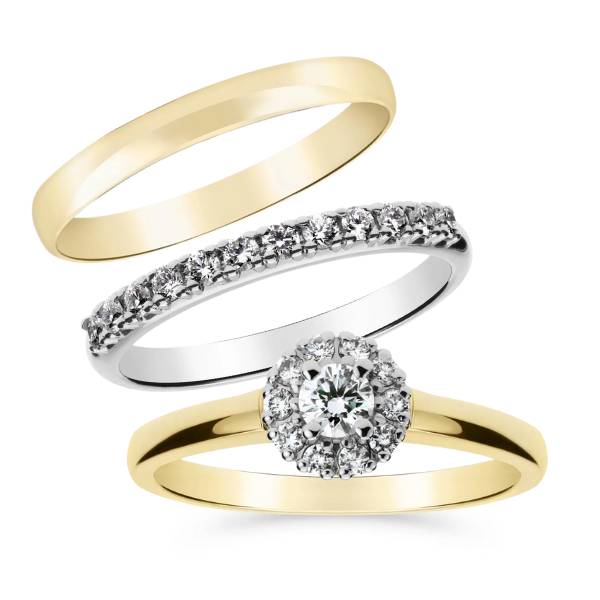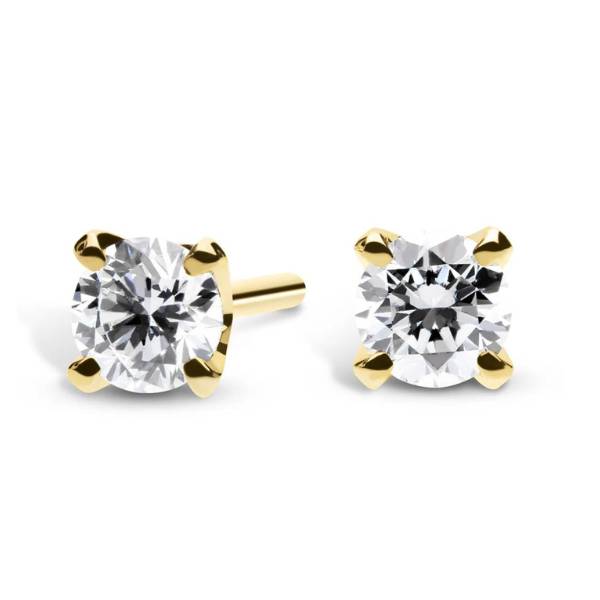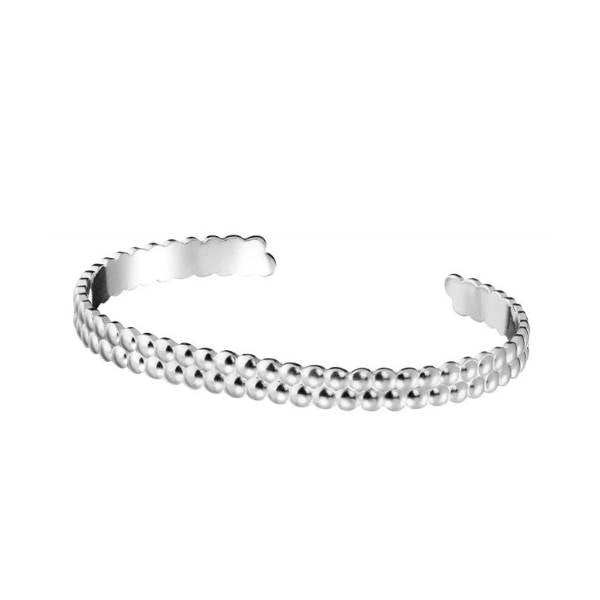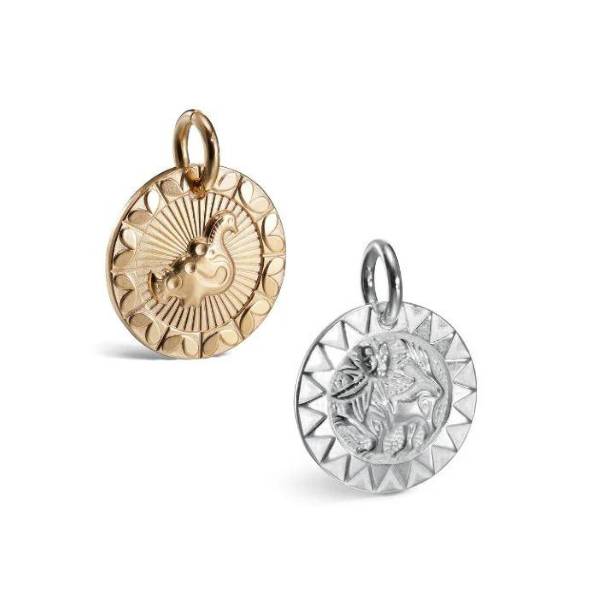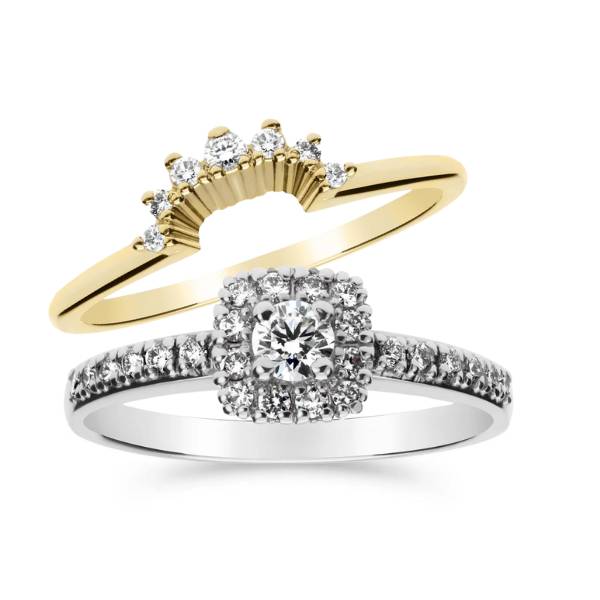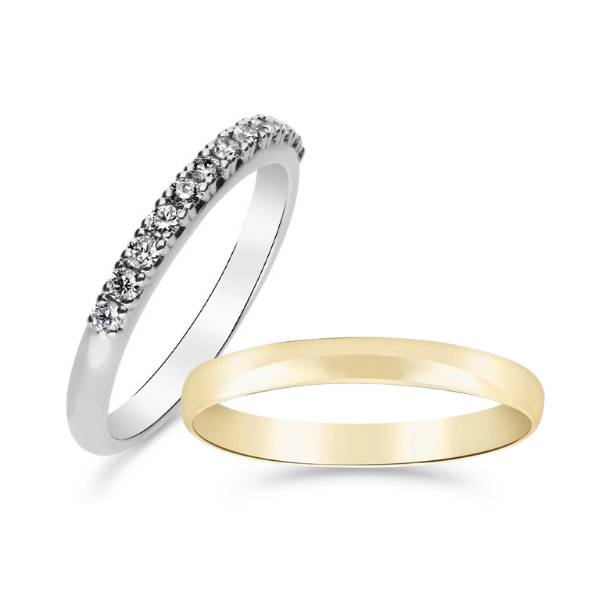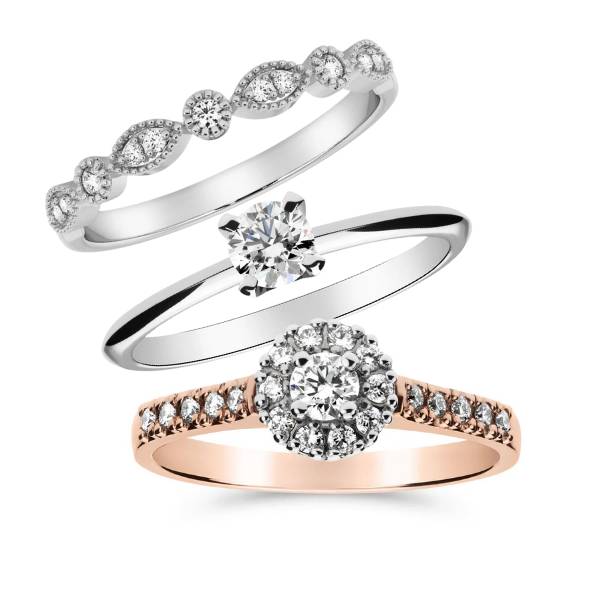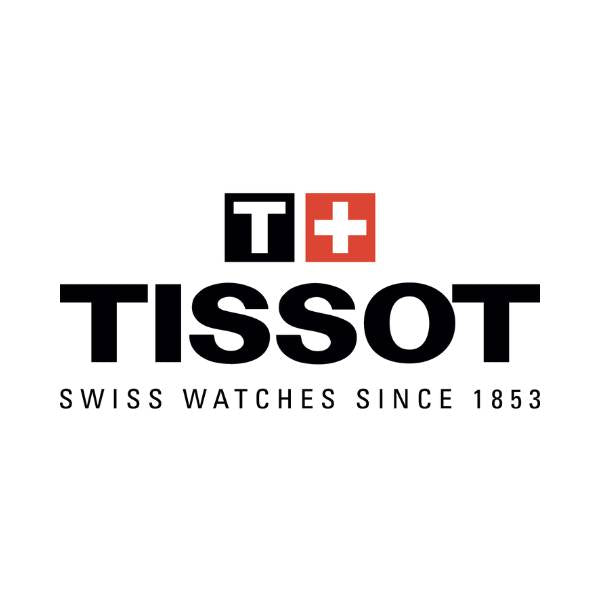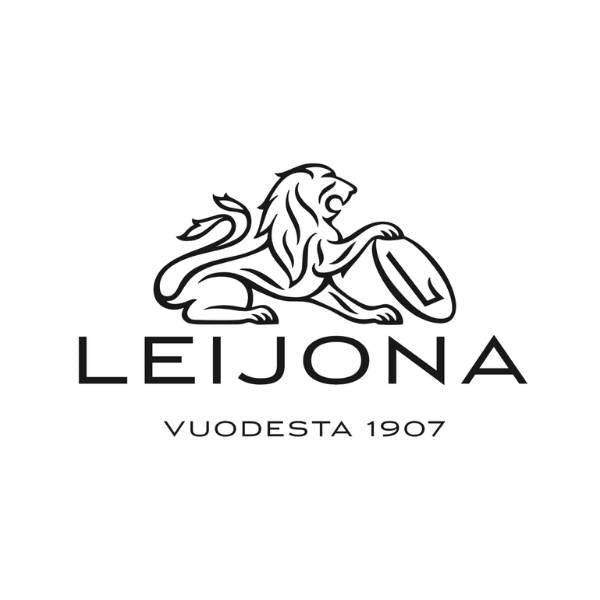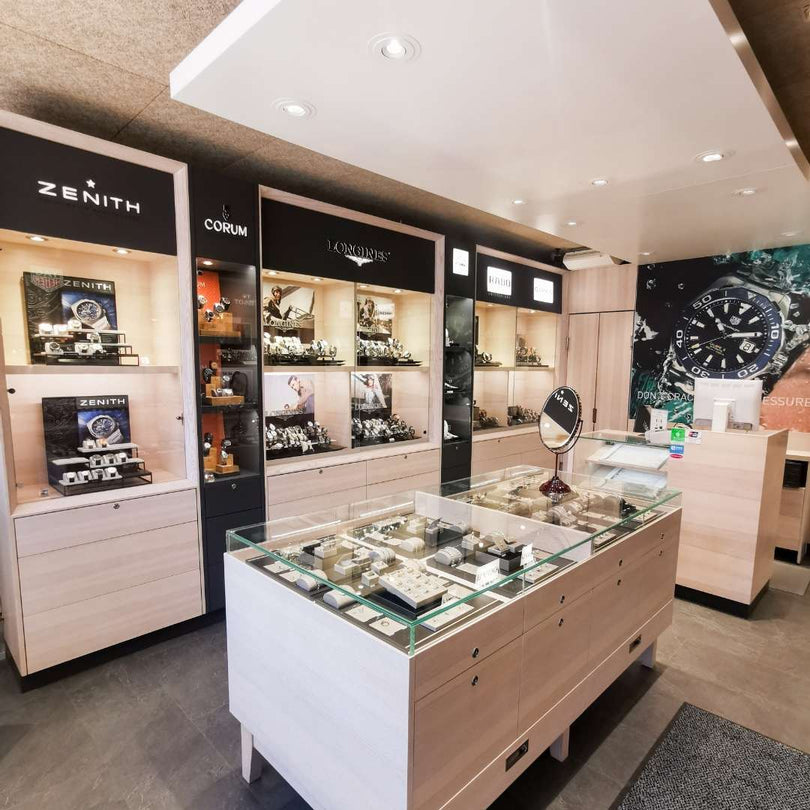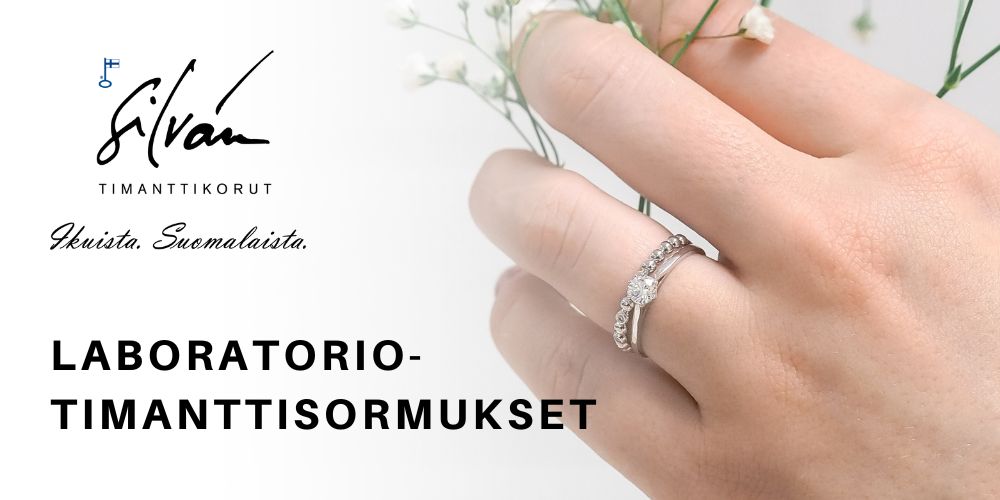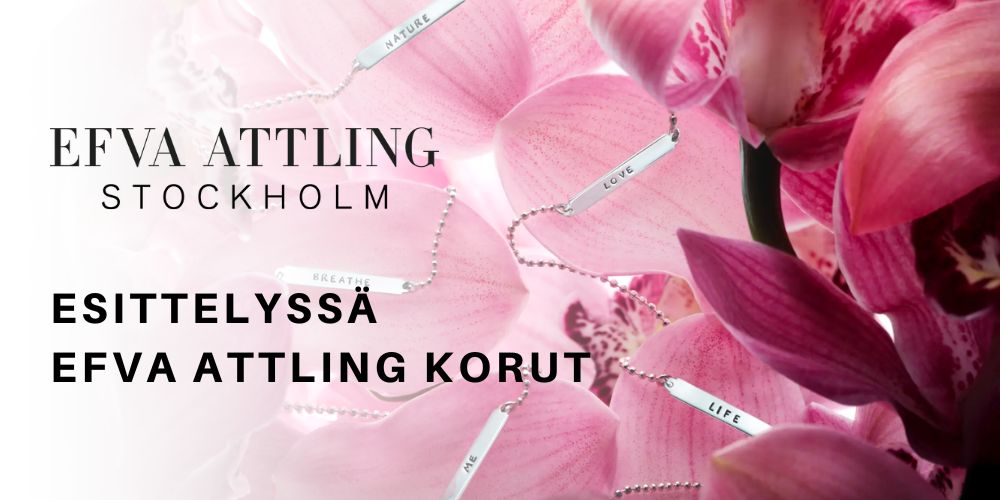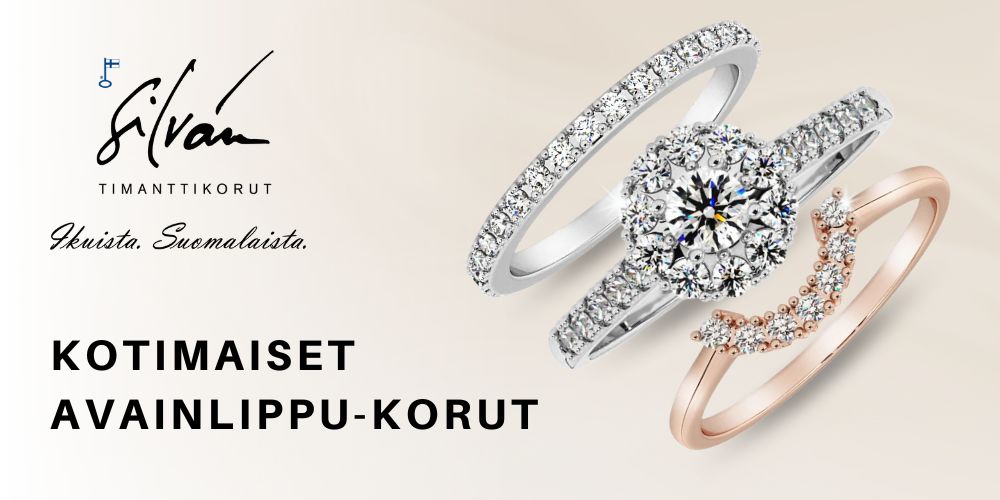The newcomer who is renewing the diamond market has many names: Lab Grown Diamond, laboratory diamond, lab-made diamond, synthetic diamond, and man made diamond. These refer to a diamond that has been grown under industrially controlled laboratory conditions and whose properties correspond to the properties of a natural diamond mined from deep in the soil. We renewed our Silván diamond ring collection by introducing laboratory diamonds as an option in our selected diamond ring models. The most wanted halo rings, solitaire rings and our eternity rings are now also available to order with laboratory diamonds.
The hardness, durability and luster of a Lab Grown diamond is just like that of a natural diamond, and the same principles are used in its quality classification. Although the origin of a diamond does not determine its properties, it significantly affects other things, such as the price of the diamond. A laboratory diamond is somewhat more affordable than a natural diamond, and thus it can be a good option for rings with a smaller budget or when you want particularly large stones in the ring, the price can be lower with a laboratory diamond. Various ethical questions are also being discussed as laboratory diamonds become more common. In this article, we will tell you what laboratory diamonds are, how they are grown, what ethical aspects are involved and how they differ from natural diamonds. Our comprehensive article will help you choose the most suitable diamond option for your engagement ring.
What is a laboratory diamond?
A laboratory diamond is a diamond produced under controlled laboratory conditions, which corresponds in its chemical structure and properties to a natural diamond grown in the soil of the earth. Man-made diamonds are a relative newcomer to the jewelry market, although the first successful laboratory diamond experiment was already done in the 1950s. Laboratory diamonds are grown from carbon atoms by imitating the natural diamond formation process or using a gas mixture containing heat and carbon. The end result of both methods is a genuine diamond, which is also classified according to weight, color, purity and cut just like a natural diamond.
Laboratory diamond or synthetic diamond. Whatever name is used, laboratory diamonds must be distinguished from diamond imitations, such as cubic zirconia or moissanite, which properties do not correspond to those of a real diamond. The hardness and light refraction properties of diamond imitations are significantly weaker than those of a real diamond. Laboratory diamonds, on the other hand, are so close to natural diamonds in their properties that even experienced gemmologists have a hard time distinguishing lab-made diamonds from natural diamonds just by looking through a loop. Responsible laboratory diamond manufacturers mark laboratory diamonds with small engravings. In addition, laboratory diamonds can be identified using ultraviolet light.
How is a lab grown diamond made?
Laboratory diamonds are produced using two different methods, the HPHT or High Pressure - High Temperature method and the CVD or Chemical Vapor Deposition method. In the HPHT method, what happens in the diamond formation process deep in the soil is imitated in laboratory conditions. As the name suggests, the HPHT method uses high pressure and heat. This method was also used to make the first successful laboratory diamond in the 1950s.
Diamonds produced by the CVD method have entered the market later. CVD proved to be a more efficient method than HPHT, especially when the goal is as clean and larger diamond as possible. The CVD method utilizes heat and a hydrocarbon gas mixture. When the gas mixture is heated with an energy source, carbon atoms are released from it, which accumulate on the growth medium, growing the diamond. The CVD method is more cost-effective and allows for more effective control of the quality of the resulting diamond, such as the number of inclusions.
Laatukoru's Silván rings, for which you can choose a laboratory diamond, use laboratory diamonds produced by the CVD method.
How do laboratory diamonds and natural diamonds differ?
A laboratory-grown diamond has the same physical and chemical properties as similar natural diamonds. The only significant difference is their origin: a laboratory diamond is grown under controlled laboratory conditions in a few weeks, while natural diamonds have been born in completely uncontrolled conditions in the depths of the earth for billions of years. Both diamonds are so-called genuine diamonds.
The origin of the diamond significantly affects the price of the diamond. Whereas laboratory diamonds are renewable and can be produced indefinitely, natural diamonds are not renewable, although they are still mined. For this reason, laboratory diamonds are more affordable than natural diamonds. As production methods develop, laboratory diamonds become more common, and as the supply increases, price competition also tightens. From an investment point of view, it is therefore not worth getting a laboratory diamond, but there are many other advantages in its affordable price and availability. A large natural diamond can be a very significant investment for many people's wallets, as well as rare colored diamonds. When the availability of laboratory diamonds increases, even with a smaller engagement ring budget, you can get a larger diamond or get it in the color you want.
A laboratory diamond and a natural diamond cannot be distinguished with the naked eye. It is possible to identify a laboratory diamond with the help of a marking or ultraviolet light. As man-grown diamonds become more common, the technology to identify them also develops.
Is a laboratory diamond a more ethical choice than a natural diamond?
Laboratory diamonds have also been called 'ecological and ethical diamonds'. Speaking like this, we want to separate laboratory diamonds from mined diamonds and the effects of mining on the environment and local communities. It is true that since laboratory diamonds do not involve mining, there is no need to talk about the environmental effects of mining, for example. Instead, it's good to remember that growing diamonds in laboratory conditions consumes a lot of energy, so their production also involves ethical and ecological issues. Diamond laboratories can currently be found in a few European countries, the United States, China, India and Israel.
Juxtaposing a laboratory diamond and a natural diamond from a responsibility point of view is not without problems, and one is not automatically a more ethical choice than the other. The market for mined diamonds is controlled by certificates and their legal origin can be traced. GIA-certified diamonds have been produced in accordance with internationally recognized labor, trade and environmental friendliness standards, and at the same time they promote the transparency of the diamond trade.
Laboratory diamonds are a welcome alternative to natural diamonds, and their demand is on the rise. For one, an unmined, lab-grown diamond is an ethical choice, for another, it's interesting because of the price. By bringing laboratory diamond rings to our engagement ring selection alongside responsible natural diamonds, we give our customers the opportunity to choose the most suitable diamond for them.
What should be considered when purchasing laboratory diamonds?
Laboratory diamonds are classified in the same way as natural diamonds. When the laboratory diamond is ready, it is sent to be certified by an independent expert. The quality classification of a laboratory diamond is the same as that of a natural diamond. It defines the weight, color, clarity and cut of the diamond. Each laboratory diamond is also its own unique individual, just like a natural diamond.
You can buy a genuine laboratory diamond ring for its properties, such as its durability and sparkle, but we do not recommend getting it as an investment. The laboratory diamond industry is still in its infancy, and as production methods develop, price competition will also intensify. The preservation of the value of laboratory diamonds in the future can only be predicted, and due to their renewable nature, they are in a very different position compared to non-renewable natural diamonds.
Silván laboratory diamond rings now from Laatukoru
Our Silván diamond ring collection was renewed in February 2023 and laboratory diamond rings were introduced to the selection. We also bring lab-grown diamonds to choose from in our most popular engagement ring and wedding ring models. In the collection you can find, for example, the most sought-after Silván halo rings, the stylish Silván Solitaire rings and the beautiful multi-stone Silván Charlotte rings without forgetting the classic eternity ring models. All ring models are available in different gold tones, yellow, white and rose gold. Silván diamond rings, handcrafted in Laatukoru's own goldsmith's workshop in Hyvinkää, are marked with the Key Flag and always made of 100% recycled gold.

